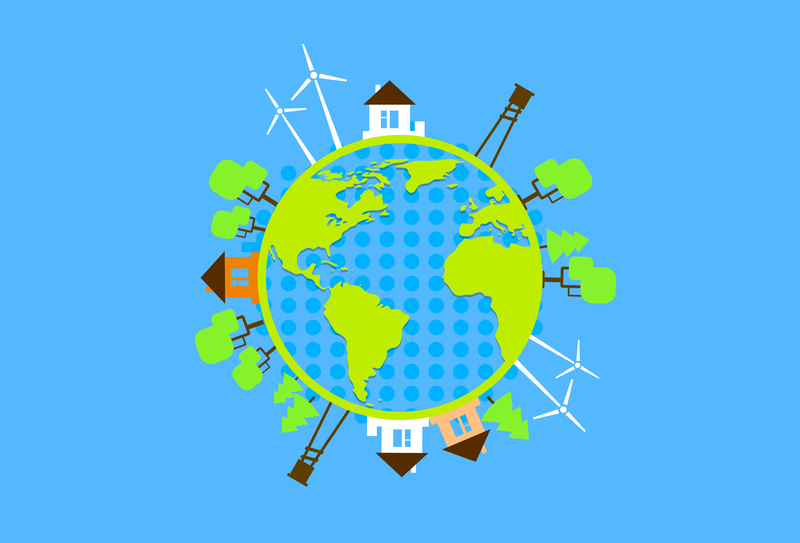Can We Reverse the Curse of Microplastic Pollution?
Microplastic pollution has surged as one of the defining environmental crises of the 21st century. From the deepest parts of the ocean to the highest mountaintops, these tiny fragments, often less than five millimeters in diameter, have infiltrated ecosystems and even our bodies. But is it possible to reverse the curse of microplastics, or is the damage already irreparable? In this comprehensive article, we'll explore the sources, impacts, potential solutions, and future outlook for microplastic contamination.

What Are Microplastics and Where Do They Come From?
Microplastics are small plastic particles that result from the breakdown of larger plastic debris or are intentionally manufactured at a microscopic size. They are broadly divided into two categories:
- Primary microplastics: These are intentionally manufactured to be small, such as microbeads in cosmetics and pellets used as raw materials in the plastic industry.
- Secondary microplastics: These particles arise from the breakdown of larger plastic items--bags, bottles, fishing nets--due to environmental exposure and physical wear.
Major Sources of Microplastic Pollution
The journey of microplastics into the environment is both direct and indirect. The following are the most common sources:
- Washing synthetic textiles: Every wash of clothes made from polyester, nylon, or acrylic releases fiber fragments into wastewater systems.
- Automotive tires: Tire wear produces microplastics that are washed into rivers and oceans via stormwater.
- Personal care products: Microbeads in exfoliants and toothpastes often escape filtration and end up in waterways.
- Plastic waste breakdown: Sunlight and wave action break down bottles, packaging, and fishing gear into microplastics over time.
The Far-Reaching Impact of Microplastics
Understanding the destructive power of microplastic contamination is key to appreciating the urgency of the challenge. These tiny pollutants have wide-ranging effects on:
Marine Life
Marine species from plankton to whales ingest microplastics, mistaking them for food. This leads to various health issues, including malnutrition, reproductive complications, and even death. Toxins absorbed by plastics further accumulate up the food chain, a process known as biomagnification.
Human Health
- Ingestion through food and water: Microplastics have permeated seafood, table salt, and even bottled water.
- Airborne particles: These can be inhaled, especially in urban environments.
- Chemical exposure: Microplastics often carry toxic chemicals and heavy metals, posing unknown risks to human health.
Environmental Systems
Microplastics disrupt entire ecosystems by inhibiting the growth and reproduction of critical species, altering habitats, and changing the chemical composition of soils and sediments.
Are We Facing an Irreversible Curse?
The ubiquity and persistence of microplastics raise the question: Can we reverse microplastic pollution, or will it plague us indefinitely?
The Challenges Ahead
- Tiny size, enormous problem: Their minuscule size makes them nearly impossible to remove from water and soil using traditional filtering or cleanup methods.
- Continuous input: Our global reliance on plastics means new microplastics enter the environment daily, often faster than any cleanup can remove them.
- Persistence: Plastics take hundreds--if not thousands--of years to fully degrade, perpetuating the cycle of pollution.
Reasons for Optimism
Despite these obstacles, there are innovative initiatives and hopeful breakthroughs that suggest we can mitigate, if not wholly reverse, the effects of microplastic pollution:
- Advanced filtration in wastewater treatment plants
- Development of biodegradable plastics
- Legislation and policy bans on microbeads and single-use plastics
- Emerging cleanup technologies and bioremediation
Promising Solutions: How the World Is Tackling Microplastics
Tackling the crisis requires both upstream (prevention) and downstream (cleanup) strategies. Here's a comprehensive look at current and emerging interventions for reversing microplastic pollution:
1. Policy and Regulatory Measures
- Bans on microbeads: Several countries have outlawed microbeads in personal care products, curbing a significant source of primary microplastics.
- Single-use plastics: Growing regulations on bags, straws, and packaging reduce the volume of plastics entering the environment.
- Extended producer responsibility: Legislations are holding manufacturers accountable for their products' entire lifecycle, incentivizing eco-friendly designs.
2. Technological Innovations
- Upgraded wastewater treatment: Advanced filtration and membrane bioreactors significantly reduce microplastic discharge from urban areas.
- Washing machine filters: Appliances equipped with microplastic-catching filters can prevent fibers from synthetic textiles reaching waterways.
- Wearable or home-based filtering devices: Scientists are developing compact devices that individuals can employ at home.
- Innovative ocean cleanup technologies: Organizations like The Ocean Cleanup have designed floating interceptors that capture plastics in rivers before they reach the sea.
3. Biodegradable and Alternative Materials
- Bioplastics: Made from renewable sources (such as corn starch), these materials can break down more readily than traditional plastics.
- Natural fiber textiles: Cotton, linen, and hemp fabrics shed fewer synthetic fibers during washing, reducing microplastic pollution at source.
- Edible and water-soluble packaging: Startups are piloting alternative packaging that dissolves or can be safely consumed by humans and wildlife.
4. Bioremediation
One of the most intriguing fields of research involves the use of microorganisms--certain bacteria and fungi--that can digest and break down plastics into harmless components. While still in early stages, advances in biotechnology could one day offer scalable solutions for degrading existing microplastics in the environment.
5. Global Collaboration and Public Awareness
- Education campaigns: Informing the public about the impact of plastic pollution encourages behavioral change at individual and community levels.
- International agreements: The United Nations and other bodies are working towards comprehensive treaties to reduce global plastic waste.
- Citizen science: Programs enabling individuals to monitor, collect, and report microplastic pollution help scientists map the problem and promote action.
What You Can Do to Reverse Microplastic Pollution
While systemic change requires government and industry-wide reforms, individuals have a crucial role to play in turning the tide against microplastic contamination:
- Reduce plastic use: Choose reusable shopping bags, bottles, and containers wherever possible.
- Switch to natural fabrics: Prioritize clothing made from cotton, wool, or hemp to minimize fiber shedding.
- Install washing machine filters: Simple add-ons can trap microfibers before they enter the sewage system.
- Read product labels: Avoid buying products with microbeads or unnecessary plastic packaging.
- Participate in cleanups and recycling programs: Join community initiatives to directly remove plastic waste from your local environment.
- Advocate for policy change: Support legislation aimed at reducing single-use plastics and improving waste management practices.
Cutting-Edge Research: The Future of Microplastic Remediation
Scientists around the world are racing to unlock innovative ways to reverse the impacts of microplastic pollution. Key areas of research include:
Artificial Intelligence and Big Data
Advanced data models help predict the movement and concentration of microplastics, allowing for more effective targeting of cleanup efforts.
Self-Assembling Nanobots
Experimental nanotechnology promises the ability to seek and break down plastic particles at a microscopic level. Though in early development, these techniques offer hope for large-scale remediation.
Engineered Organisms
Biotechnologists are modifying microbes to enhance their natural ability to metabolize plastics. Engineered fungi and bacteria could, in theory, digest plastics in situ, restoring the ecological balance.
Genetic Engineering of Plants
Researchers are exploring the use of genetically modified plants capable of absorbing and transforming microplastics from contaminated soils--a potential revolution in agricultural and environmental remediation.

Challenges Ahead: Is Reversal Possible?
Despite the promising technological and legislative advances, reversing microplastic pollution on a global scale remains a formidable challenge. Obstacles include:
- Scale of the problem: With trillions of microplastic particles already dispersed globally, reclaiming them all is an immense task.
- Lack of standardization: There is still no unified protocol for measuring, tracking, or reporting microplastic contamination, complicating coordinated action.
- Economic barriers: Many solutions, especially high-tech options, are costly and inaccessible for developing regions most affected by waste mismanagement.
- Potential trade-offs: Some alternatives to plastics have other environmental or social drawbacks (for example, bioplastics competing with food crops for resources).
Conclusion: Can We Truly Reverse the Curse?
Reversing the curse of microplastic pollution is not a question of a single technological fix, but a multifaceted challenge requiring the concerted efforts of governments, businesses, researchers, and individuals. While the complete eradication of existing microplastics may be extremely difficult, slowing and eventually stopping the inflow of new plastic particles is well within our reach.
The path to a microplastic-free world hinges on embracing a blend of innovation, prevention, and restoration:
- Accelerate the adoption of sustainable materials and circular economy models
- Invest in research and international collaboration
- Empower communities with education and practical tools
- Prioritize prevention to reduce future microplastic accumulation
In summary: While reversing all damage may be impossible, we can undoubtedly minimize further harm, restore critical habitats, and ensure a cleaner, healthier future for our planet--if we act swiftly and decisively.
Want to be part of the solution? Start today by reducing your own plastic footprint and advocating for systemic changes that will help humanity turn the tide on microplastic pollution--once and for all.
```